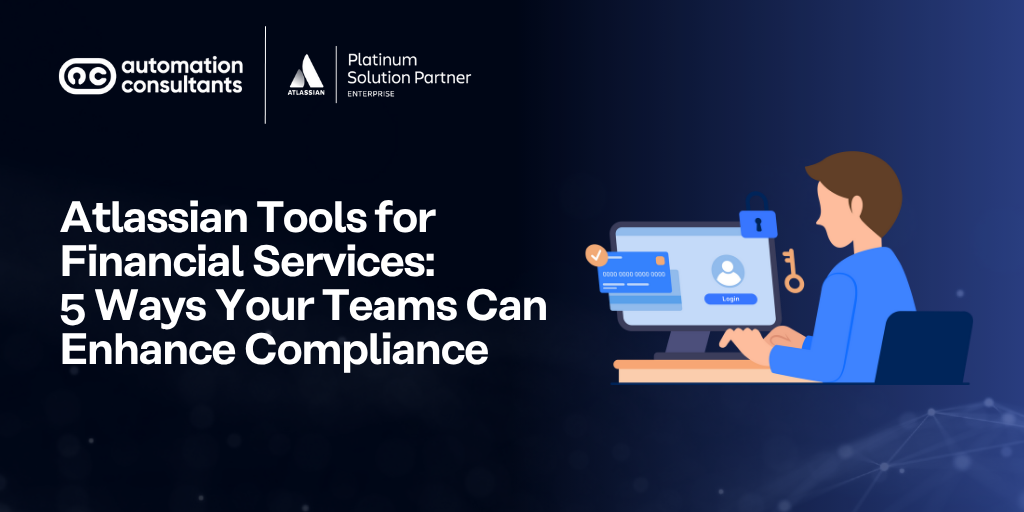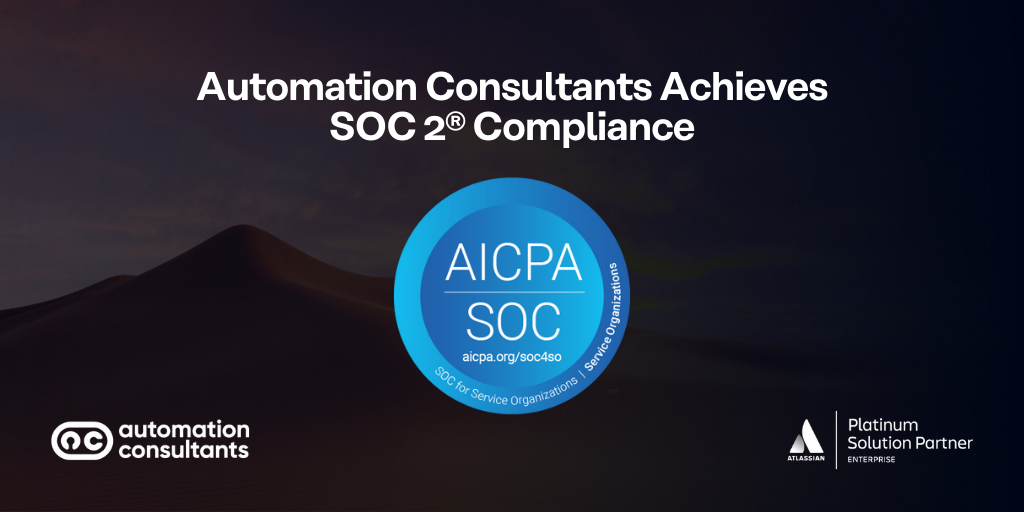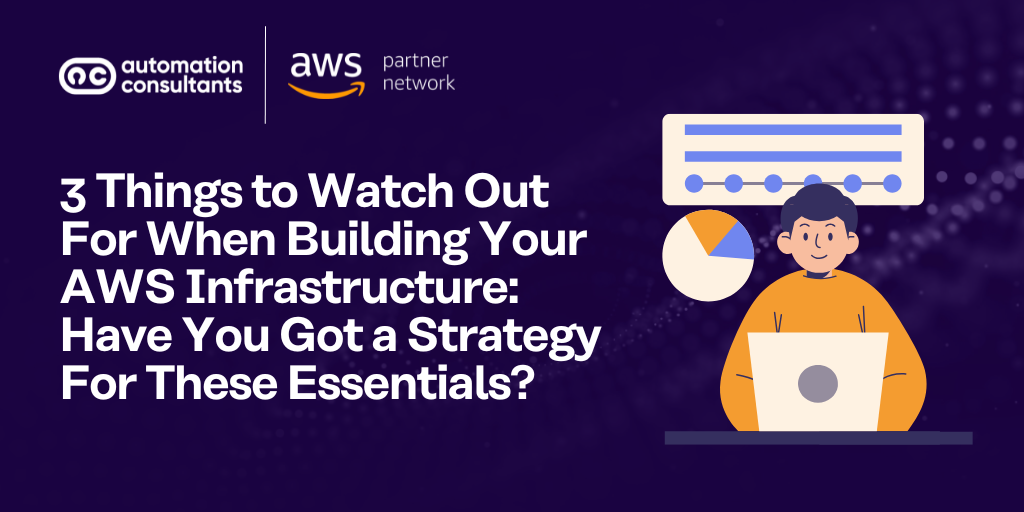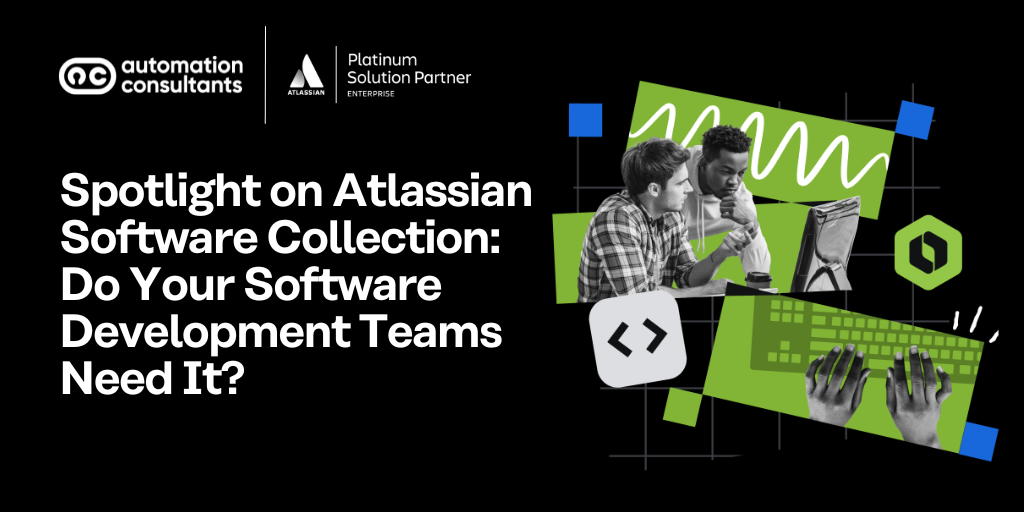Today, we’re exploring how teams in the highly regulated financial services industry can use Atlassian apps to support their compliance efforts.
Now, here at AC, our client base includes both global and national banking firms, and we have a working knowledge of regulations like DORA and NIS2. Crucially, we’ve also witnessed the increasing cyber security and data protection measures that financial entities need to manage, alongside evolving customer expectations, and the need for fast, seamless and secure collaboration.
So, let’s dig into how the Atlassian Cloud Platform enables financial services teams to collaborate and communicate even faster and more securely than ever:
1. Benefit from a 'single source of truth' with Confluence
Building a singular, secure repository can play a significant role in maintaining data protection, information security and risk management practices. Confluence is powerful tool to centralise an organisation’s policies and procedures.
Alongside housing documents, Confluence enables real-time editing and creation, so teams across a financial firm can liaise on risk assessments, succession planning documents, disaster recovery plans, and a multitude of other compliance content.
With clear audit trails, user access management and versioning controls, teams can be confident that they’re viewing relevant, appropriate and approved content.
Well-documented policies and procedures are integral to compliance with major regulations, from DORA and NIS2, to FCA and PRA guidelines.
ℹ️ Spotlight on Compliance for Confluence
Our colleagues over at AppFox created Compliance for Confluence, an Atlassian Marketplace App, to build upon Confluence’s native data protection and information security measures.
From scanning your Confluence pages for sensitive data and then automatically redacting it, to applying classification levels to manage confidential information, and minimise the risk of data leaks, Compliance for Confluence takes your single source of truth and arms it with enhanced access controls, page classifications and greater data protection.
Try it the Compliance for Confluence Marketplace app for free today!
2. Centralise enterprise knowledge
Information in silos can pose a threat to compliance efforts – whether that be through inefficient data collation, and potential for human error, or through disconnected datasets and a lack of big picture insights.
Enter Rovo Search, billed as connecting enterprise knowledge.
Rovo is a relatively recent addition to the Atlassian Cloud Platform, and provides AI-powered search, chat and agentic capabilities.
Its search functionality enables teams to connect the dots between a vast range of the third-party SaaS applications used across a financial organisation. That could be anything from customer data within a CRM, to retrieving Azure Devops repositories.
This 360 degree view of enterprise knowledge enables a compliance team to swiftly accrue datasets for reporting and auditing purposes. It also allows stakeholders to spot patterns and trends, respond to potential threats, and assemble the knowledge they need – quickly and securely.
ℹ️ Did you know?
Rovo Search now includes Data Center connectors. This is valuable for financial firms who still need to run some applications on-premises, and can now connect these to their wider Cloud tech stacks.
3. Unleash AI-powered Rovo Agents
We mentioned it in passing earlier; Alongside Rovo Chat and Seach, is the Rovo Agent offering.
Rovo Agents are essentially AI agents which have been designed to fulfil very specific use cases. Rovo comes with 20 ‘out-of-the-box’ agents ready to use. Customer-facing teams, for example, could use the ‘Service Request Helper’ Agent, which helps teams to respond to tickets.
Where we see real opportunity, particularly around automating and enhancing compliance processes, is in the creation of custom Rovo agents.
Using Rovo Studio or Forge, teams could build their own agents to, for example, provide a report of which users have viewed policy documents stored in Confluence. Another idea could be to create a Rovo Agent to support elements of the onboarding process, ensuring new team members are automatically provided with a code of conduct, compliance checklist, key data protection policies and controls – and so on.
Crucially, whether you build custom Rovo Agents, or maximise value from out-of-the-box ones, automating repetitive or manual tasks can free up teams’ time to focus on more strategic compliance work.
Have an idea or use case for which you need a custom Rovo Agent, but unsure how to build it? Is Forge an unknown entity? Or do you need guidance around identifying areas for automation and optimisation? As Atlassian Platinum Solution partners, and with extensive experience across the entire software lifecycle, let us guide you through the world of Rovo Agents.
4. Explore the value-add of Atlassian Marketplace apps
Atlassian apps include a host of powerful native capabilities, many of which can support compliance efforts in financial services firms.
When you add further functionality from Atlassian Marketplace apps, built by third-party vendors such as our colleagues at AppFox, you can strengthen those compliance efforts even more.
Let’s look at two examples.
Data protection and management
From ISMS (Information Security Management System) policies, to confidential contracts, your Confluence undoubtedly houses sensitive information.
You can use some native Confluence functionality to protect this data, such as page labels and restricting user access – but this may not be a robust enough solution for firms in highly regulated industries, like finance.
We mentioned it a little earlier, but this is where the Compliance for Confluence app comes in. You can apply classification levels to alert users whether your pages are public-facing, internal only or high risk – and you can restrict access based on these levels.
You can also use the app to scan your pages for sensitive data, and automatically flag when PII is identified. Once Compliance for Confluence has identified sensitive data, it can automatically redact it, to further protect it.
Clean and compliant Jira instances
Software development teams at a financial institution may be using Jira. In fact, since Jira expanded its range of business team templates and features, many teams could be using it to manage their work. With Jira playing such a central role in project management, it’s essential to maintain a clean, well-governed instance – but we know from experience of supporting clients that this can be very challenging, especially in fast-moving firms where product innovation and speed of delivery is vital. Duplicates can spiral, inactive users, projects and schemes can clutter your instance, and productivity can stall. What’s more, old and inaccurate data can compromise your auditing and reporting – which we know are key compliance measures.
Optimizer for Jira is an Atlassian Marketplace app which can help with this. Offering a bird’s eye view of the ‘health’ of your Jira instance, it will swiftly identify problem areas like duplicate custom fields, inactive users, old projects and so on. With bulk update actions, you can also use Optimizer to clean up your instance efficiently and effectively.
AppFox products like Compliance for Confluence and Optimizer for Jira can strengthen your compliance efforts – but did you know our colleagues there have built a whole range of other apps to enhance your Atlassian experience? From Workflows for Confluence (which enables you to build complex, custom workflows through a simple drag ‘n’ drop interface), to their first Rovo-powered product, the Captionizer Agent.
5. Expect increased security with the isolated Atlassian Cloud
It is increasingly clear that Atlassian is paving the way for a Cloud-first future. Recent product innovations, such as Rovo, are Cloud-only, and those on Data Center sites may have to seek alternative integrations.
However, we know – and Atlassian also recognises – that some organisations simply don’t have the option to migrate away from self-hosted infrastructure to the Cloud. This is often down to regulatory or compliance requirements.
As such, Atlassian will introduce the Single Tenant Cloud, also known as an isolated Cloud, in 2026.
Customer data will be stored in a private, isolated Cloud environment, with dedicated storage, applications and databases – all securely separated from other Atlassian Cloud customers.
This approach may enable financial services firms to still benefit from Atlassian’s Cloud architecture and align themselves closer the System of Work principles of collaboration and teamwork, whilst retaining the security elements they need to comply with rigorous legislation and industry frameworks.
An evolving toolset for fast-moving teams
Of course, all of the above is best practice and guidance based on our years of experience supporting firms in the financial industry – but compliance is an evolving beast. As threats to cyber security continue to change shape, so too must regulations.
Alongside this, as the financial sector adapts to modifications in service delivery, changing markets, the surge in AI, and more, we can expect industry bodies, like the PRA and FCA, to also amend their guidelines and compliance measures.
From our perspective, it seems as though Atlassian is also not sitting still. Instead, it is continually releasing new features and enhancements to meet today’s continual flux. So as compliance requirements evolve, so too will the Atlassian Cloud Platform’s capabilities.
From compliance to performance, we’ll bring you expertise shaped over two decades, and strengthened by working closely with globally renowned banking firms and financial institutions – and we’ll guide your organisation to long-term success and compliance.





